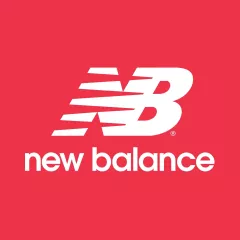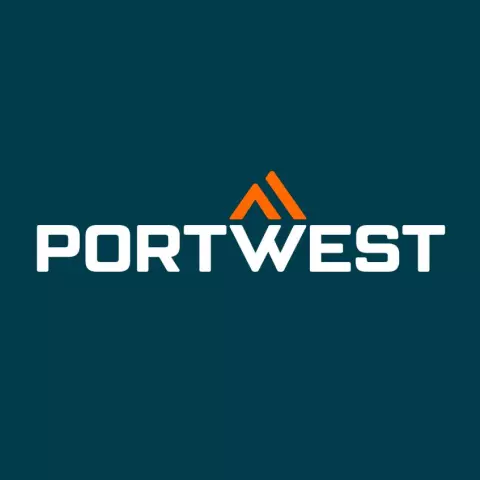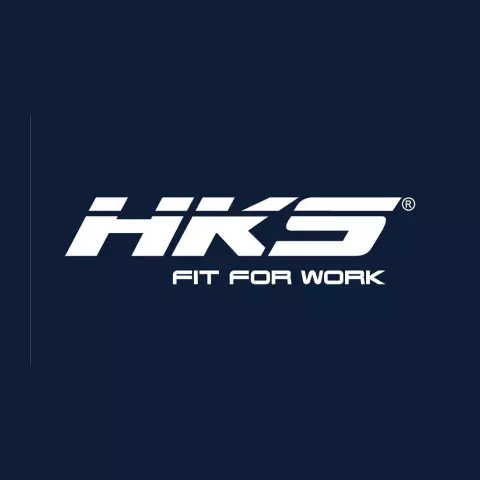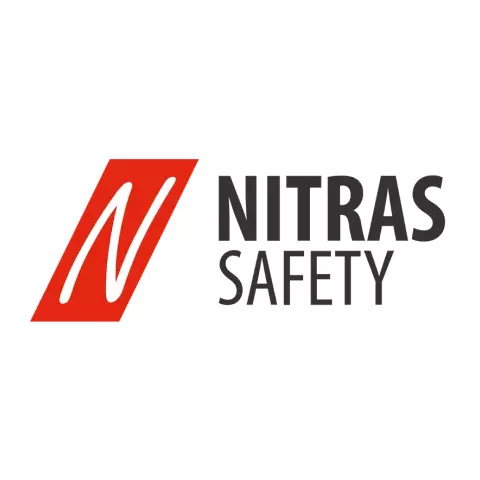
Your Essential Guide to Indirect Procurement: Strategies and Tips
Introduction In today’s competitive corporate climate, indirect procurement (IP) is crucial to operational efficiency and cost control but sometimes disregarded....

Get 20€ off on your first order!































KPIs are vital for measuring business performance. KPIs are vital to measuring procurement efficiency, cost-effectiveness, and performance. Tracking procurement KPIs helps organisations make strategic decisions and optimise procurement operations by revealing purchase procedures, supplier performance, and operational effectiveness.
KPIs quantify a company department, process, or strategy’s effectiveness. They are crucial for assessing business strategy costs, dependability, performance, and outcomes.
“Tracking” a KPI means monitoring its changes for future planning. Purchasing KPIs track all aspects of buying and procuring products and services for an organisation.
Procurement has developed from transactional tasks (now purchasing) to strategic actions that maximise and create corporate value. Success in these activities impacts vendor relationships, customer happiness, and income.
Monitoring procurement KPIs is essential to tracking an organization’s health and its smaller efforts.
Procurement teams’ job has evolved, notably in recent years. End-to-end process tracking is needed to monitor and control prices, sourcing, quality, and delivery timeframes in contemporary procurement.
Business objectives and KPIs vary by industry, however procurement departments in many sectors share aims.
We’ve listed 22 critical procurement KPIs for suppliers, people, and operations to help you reach yours.
Suppliers are essential to your supply chain. Tracking supplier data makes it simple to keep good suppliers (discounts, anyone?) and gives you time to discover new ones if quality or lead times decline. Keep track on supplier performance, compliance, and price with these KPIs.
The quantity of suppliers matters more than you think. Buyers with few suppliers risk becoming dependent on one for particular goods or services. As with prior supply chain disruptions, potential consumers may notice shortages and bottlenecks. After all, your shortfalls affect others.
But too many suppliers reduces the likelihood of discounts and price discussions, which might hurt your finances. Take into account your procurement and accounts payable departments’ bandwidth. Do they have time and resources to monitor, process, and audit many suppliers? A well-organised procurement plan will keep your authorised supplier list (ASL) manageable.
Shopping around and comparing vendors is vital for finding the greatest deal on any purchase. This is why supplier diversity matters.
Supplier diversity, like the preceding KPI, reduces supply interruptions. Supplier variety makes the business environment more robust and boosts economic potential.
Suppliers must deliver on time. Consistently late delivery are suspicious. We recommend measuring delivery time along with supplier performance and number. One late-delivering supplier can ruin a firm with a sparse ASL.
This KPI unintentionally collects and tracks parcel carrier delivery time, which is quite useful. Setting lead times and picking the optimal carrier for products and customers requires real-time delivery data from big carriers like DHL to local delivery drivers.
Before BPM software, businesses depended nearly entirely on audits to verify suppliers’ contract compliance. Now that you can quickly analyse vast volumes of data, use these measures to determine your vendors’ contract compliance rate:
Secure the finest suppliers from the start and develop clear compliance standards for your organisation to avoid non-compliance before a contract is signed. Performing periodical audits after contract signing is crucial.
Some orders require expediting. Are you getting supplier assistance when you and your customer face crunch time? Compare the number of times a supplier has fulfilled your orders to the number of orders you’ve placed with them. Monitoring this number will show vendors who always satisfy your demands.
This key procurement KPI monitors the percentage of supplier items that don’t fulfil compliance norms. Product flaws hinder production and can be fatal in automotive and nuclear power.
A supplier’s failure rate is usually calculated by dividing the number of faulty items by the number of units tested. You should avoid providers who frequently send poor items, but occasional failures are possible.
Quality control analysts check each supplier’s item, which might result in approval or rejection. It’s crucial to use a procurement platform that records consistently rejected products to learn about a supplier’s QA procedures.
Rejecting products costs money and reputation. One lousy supplier may tarnish your industry reputation by missing delivery dates and extending lead times.
Lead time, along with cost and quality, is one of the top three factors buyers examine when selecting a bid winner. Suppliers specify lead periods for numerous reasons:
Suppliers calculate lead times by adding the days needed to source supplies, make parts, assemble them, and ship them. Short lead times are advantageous and can outweigh price in urgent situations. Concerns should be raised about a supplier with inconsistent or extended lead times.
A critical part may have little or no supplier competition, allowing one supplier to set your price and profit. Work ahead to avoid this:
“How do you measure something so nebulous?You may ask. Good question.
There is no precise method for price competitiveness, but thorough market research in your business and your suppliers’ helps compute the average item cost and alternative sources.
Businesses seldom prioritise procurement personnel KPIs, yet a procurement department’s size and breadth affect productivity and profitability. Consider the following to simplify corporate operations and enhance procurement processes:
Budgeting and forecasting benefit from tracking and measuring procurement department full-time staff. Workload size, sector size (the public sector is usually much greater than the private sector), and eProcurement or BPM software capabilities should be considered when choosing personnel.
Business procurement costs comprise the spend-per-employee KPI. A high rate should not always entail job layoffs because procurement teams have several responsibilities (see KPI #12). Tracking this data over time helps address skill gaps and identify departmental inefficiencies, poor training, and poor employee performance.
Cost savings, or cost reduction, KPIs assess purposeful efforts and initiatives over time. Any procurement team’s basic aim is cost reduction, making this an important KPI. Luckily, its measurement is a straightforward comparison of previous and new spending costs.
Businesses may go beyond analysing cost reductions to be proactive and strategic. Cost avoidance in procurement involves actively decreasing future expenditures and needless charges. Your company may effect future expenses by doing what? Several things, actually. Start here:
On-contract expenditure, also known as spend under contract, is a complicated procurement KPI with almost as many interpretations as organisations that use it. Essentially, it assesses the percentage of the preferred supplier’s addressable expenditure (all cash given to that supplier) that can be attributed to a contract.
High spend-under-contract rates reflect a strong procurement team that drives value and reduces risk. To get a high rate:
PO cycle time is the period between a buyer receiving a purchase requisition and transferring it to the supplier. This period includes the following events:
Purchase requests are received and processed by the procurement staff.
The Finance department examines the budget and request for proposal to ensure funding availability.
After reviewing supplier RfPs, the procurement team selects a winner. This stage involves pricing, terms, and condition talks.
Upon submitting a purchase order (PO), the supplier receives a legally enforceable contract.
In the purchase cycle, this KPI is crucial. It sets the ordering procedure and PO (not assembly or finished product).
This process inside a process measures procurement team efficiency and effectiveness. One of the best methods to improve your company’s image and customer experience is to reduce PO cycle time. Finally, it provides visibility and financial responsibility to the PO process, which benefits the accounts payable team and procure-to-pay process.
Effective procurement team training is essential. New personnel must learn their many team tasks and start immediately to keep the procurement process moving.
This KPI computation is simple and typically automated by post-training assessments. Elapsed time and graded score indicate how fast and clearly a trainee understood the topic.
Note: This KPI only applies to online, self-paced employee learning courses.
Track the lead time KPI to measure supply chain efficiency. It quantifies the time between receiving a client order and receiving their stuff. It immediately exposes procurement process inefficiencies due to order processing, production, and shipment time. Your business runs more effectively with less lead time.
Add the three lead time phases to get the overall lead time:
Total lead time = order processing + manufacturing + delivery.
Any firm must make emergency purchases. However, recurrent occurrences are expensive because:
High rates generally indicate inadequate inventory control and vetting, reflecting negatively on a corporation and its procurement staff. Thus, future planning, supplier sourcing, and procurement team training must be increased to lower this KPI.
Divide emergency orders by total orders to measure this KPI.
Budgets and deadlines ensure enough stock to complete orders and enable ample delivery time. Companies that repeatedly miss either lose consumers, reputation, and income.
Every employee of a corporation should check this KPI often, even in good times, to identify bottlenecks before they become issues.
Procurement experts understand that their complicated tasks depend on many other departments, if not all. To provide the greatest products at the best price, sales, marketing, inventory control, finance, and IT must work together. The following KPIs measure procurement performance.
The inventory accuracy statistic compares a company’s digital (or paper) stock records to its actual inventory. Lowering this KPI can save money (keeping superfluous inventory, unsold unregistered inventory) and customer relationships (stock shortages causing supply chain bottlenecks).
A physical inventory count, divided by the number of items on record, and multiplied by 100 yields this KPI rate. Keep these in mind when counting inventory:
The expenditures of a sales channel, such as a business branch or division, are compared to its sales income. Expenses rising above revenues suggest deteriorating gross profit margins.
That’s a red sign, and identifying its source is crucial before it escalates and costs more. Budget variations, low sales, excessive delivery charges, or low-return advertising campaigns may be factors.
Inventory turnover, or “stock turn,” indicates how often a company sells and replaces its goods. Measurement of inventory turnover helps firms enhance inventory management and sales rather than driving one action. Retailers, who sell directly to clients, utilise it extensively.
Low turnover signifies low sales, which might indicate low demand, poor marketing, or a lack of market knowledge. Unsold stock, or “dead stock,” delays fresh item stocking, worsening the problem.
Leaders of businesses with low turnover can take numerous steps to increase it:
Dividing the cost of all commodities sold in a given time period by the average inventory value measures this KPI:
Sales cost / average inventory equals inventory turnover ratio.
As its name implies, cost per invoice is the internal invoice processing cost. It includes three data points: opportunity tracking time, employee salary, and building/facility electricity. Manual processing incurs hidden expenses including time spent fixing mistakes, checking invoices, and archiving and keeping information.
Small enterprises seldom measure this KPI. Larger companies with hundreds of daily sales and a professional procurement staff can pay $400 each invoice. The easiest method to reduce this amount and minimise hidden costs is to automate invoices.
How does a company’s procurement department profit? Leadership can see how procurement operations influence the bottom line with the procurement ROI KPI. Find it by calculating:
Cost savings / procurement operations cost equals procurement ROI.
Our analysis of key procurement KPIs contains algorithms to help you estimate your business’s figures. We propose using digital technologies instead of manually calculating these KPIs daily or monthly to save your procurement team time.
Data may be tracked, organised, and shown easily with digital technologies. Teams may boost company agility and track competition and supply chain activities with real-time KPIs and performance.
Internet and closed-source software are used in eProcurement solutions to execute online procurement. Only suppliers selected to submit bids and POs for that project can access these platforms. The program commonly uses hyperlinked email or online portals for submittals that connect to buyer databases.
All procurement-related data in an organisation is collected, organised, and managed. Enterprise resource planning (ERP) solutions are utilised to collect and store this enormous, fragmented data and operate procurement department and company operations.
Data collection and interpretation are different. Standards, organisation, and accessibility are needed for stored data pieces. BPA software accomplishes this comprehensively. They link sources, improve accuracy, and grow an organisation by breaking down data silos. Easily customisable dashboards, databases, and reports display the results.
Successful data-driven decision-making and risk management generate a data-driven culture. More companies than ever are seeking to become adaptive, agile, data-driven cultures as pandemic-era supply chain disruptions persist.
Creating an eProcurement, ERP, BPA, or integrated mix of these systems is a major step towards efficiency. Follow these recommended practices to maximise your new efficiency tools.
In today’s competitive corporate market, measuring procurement KPIs is essential for a healthy, efficient, and successful procurement process. Procurement teams can accomplish organisational goals, manage supplier relationships, optimise costs, and improve performance by monitoring these 22 critical KPIs. Implementing digital technologies and KPI monitoring best practices may improve procurement processes and build a data-driven culture with real-time information. KPI evaluation and improvement can help organisations stay nimble, competitive, and ready for current procurement problems.
Thank you! You've signed up for our newsletter.











Introduction In today’s competitive corporate climate, indirect procurement (IP) is crucial to operational efficiency and cost control but sometimes disregarded....

Introduction Organisations need SS to improve procurement procedures, supplier relationships, and ROI. Businesses may increase growth and efficiency by changing...

Introduction The EU’s Carbon Border Adjustment Mechanism (CBAM) would impose rigorous new responsibilities on businesses, especially those with high carbon...

Introduction In today’s competitive corporate climate, indirect procurement (IP) is crucial to operational efficiency and cost control but sometimes disregarded....

Introduction Organisations need SS to improve procurement procedures, supplier relationships, and ROI. Businesses may increase growth and efficiency by changing...

Introduction The EU’s Carbon Border Adjustment Mechanism (CBAM) would impose rigorous new responsibilities on businesses, especially those with high carbon...
Get 20€ off on your first order!
Save 30% by buying directly from brands, and get an extra 10€ off orders over €100
Save 30% by buying directly form brands, and get an extra 10€ off orders over €100